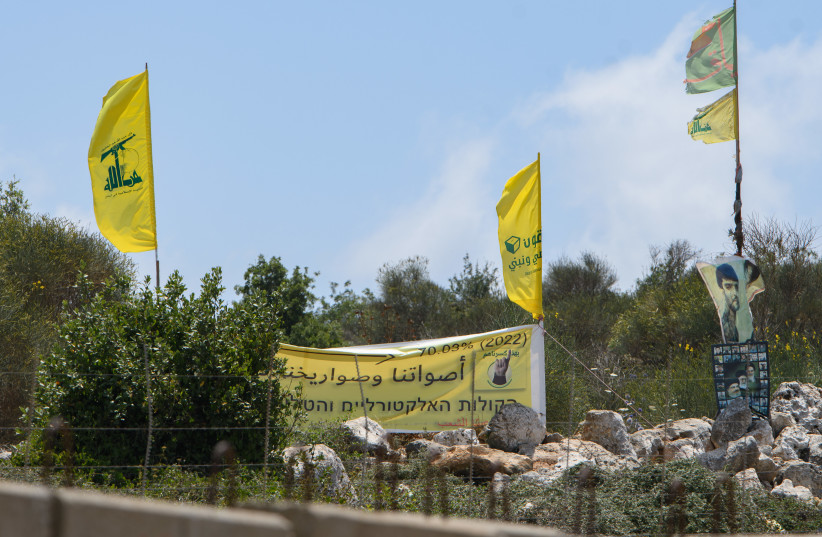This week saw a rise in tensions between Israel and Lebanon, with Hezbollah driving this rise in tensions by increasing the tempo of its provocation. This has included setting up tents in the disputed Mount Dov Area several months ago and then trying to use these as leverage to get changes of the border near the village of Ghajar.
Hezbollah is doing these operations as part of a larger plan to rewrite the rules of how it deals with Israel. Hezbollah believes Israel is deterred. It learned from the maritime deal last year that creating new claims and demands and then claiming that if Israel doesn’t concede something there might be “war” is a successful tactic.
Hezbollah operationalizes Lebanon’s government to act on its behalf and then it cashes in at the end of the negotiation to show it has “defended” Lebanon. This in turn lets its justify stockpiling a massive illegal arsenal of missiles and weapons. As such, Hezbollah creates a feedback loop that it benefits from.
This is a new tactic but one it has developed over time. Back in 2006, Hezbollah launched an attack on Israel. This led to the July war that Hezbollah commemorated this week. It’s important to recall that back in 2000, Israel left Lebanon. Hezbollah saw this as a victory and laid the groundwork for more provocations against Israel. This culminated in the 2006 conflict.
After that war, Hezbollah appeared to be deterred. It was focusing on domestic policies. It had helped assassinate former Lebanese prime minister Rafic Hariri in 2005. When Syria was forced out of Lebanon, Hezbollah got more freedom of movement. It developed its own parallel communications system and infiltrated other aspects of the country.

Hezbollah's increase in power within Lebanon
Although it had some minor political setbacks, it muscled its way into a more powerful position in Beirut in clashes in 2008. It was then able, after 2011, to play a role in the Syrian conflict. After this, it was able to also hijack the Lebanese presidency and get its ally Michel Aoun appointed.
From that point on, it began to try to dictate terms in southern Lebanon. It assassinated dissidents like Lokman Slim and also created a kind of balance of deterrence with Israel. This meant that Hezbollah would respond to any actions by Israel, including in Syria.
Several incidents increased tensions on the border through around 2018 and 2019.
This is when Hezbollah was able to capitalize on Syria’s regime returning to the Golan border to increase its power. Although the US killed Qasem Soleimani and Abu Mahdi al-Muhandis, close friends of Hassan Nasrallah, and even though other key Hezbollah members were killed over the years, the group expanded its power.
Now it has sought to redraw the rules in the north. It seeks not just a balance of deterrence but to move pawns into disputed areas and show it can get the land and maritime borders re-drawn. It calculates that Israel is distracted internally. It also works in concert with Hamas and Palestinian Islamic Jihad and Iran and Iranian-backed militias in Syria and Iraq to accomplish this.
The recent moves by Hezbollah, therefore, have major ramifications for Israel and the region. It shows that the “war between the wars” campaign may have been an important focus for Israel, but that Hezbollah can now move its pawns, in the shape of tents and demands, closer to Israel. This is part of Iran’s overall goal to “unify” fronts against Israel in the region and force Israel to focus on problems closer to the northern border and Jenin.
